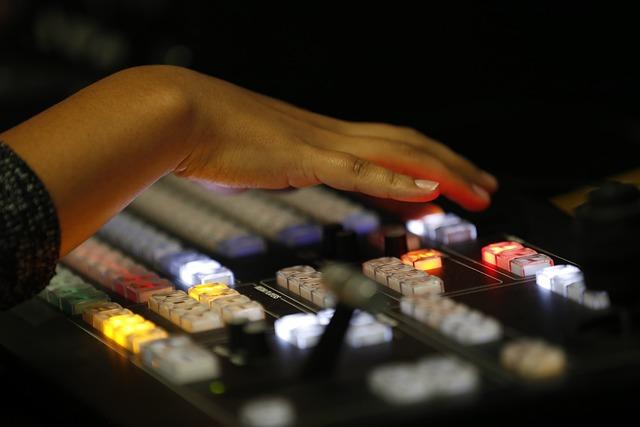In the multifaceted world of filmmaking, the director often emerges as the singular visionary, the maestro orchestrating the complex symphony of storytelling, performance, and visual artistry. Yet, this celebrated role raises a critical question: is the director’s influence in the filmmaking process overvalued? While directors undeniably shape the narrative and aesthetic direction of a film, this analytical exploration seeks to unravel the intricate tapestry of collaboration that defines cinema. By examining the contributions of writers, producers, cinematographers, and editors, we aim to reassess the weight of the director’s role and explore whether their prominence overshadows the collective effort essential to the art of filmmaking.
Reevaluating Creative Leadership: The Directors Influence in Context
In the intricate tapestry of filmmaking, the director’s role is often perceived as the pinnacle of creative leadership. However, this perception can overshadow the collaborative essence of cinema. Directors, while pivotal, are part of a larger creative ecosystem. It’s essential to consider how their influence is woven through various contextual layers. This involves acknowledging the contributions of other creative forces, such as:
- Screenwriters: The architects of the narrative, providing the foundation upon which directors build.
- Cinematographers: The visual storytellers, crafting the aesthetic that shapes the viewer’s experience.
- Editors: The sculptors of time, piecing together moments to create rhythm and pace.
- Production Designers: The creators of worlds, setting the stage for the story to unfold.
Each of these roles brings a unique perspective and expertise, challenging the notion that the director is the sole visionary. By reevaluating the director’s influence, we can foster a more inclusive appreciation for the collaborative nature of filmmaking. This not only democratizes the creative process but also enriches the final cinematic experience.
Collaborative Synergy: The Crucial Roles Beyond the Directors Chair
While directors often receive the lion’s share of recognition, the filmmaking process is a tapestry woven from the talents of many. Producers are the architects who shape the project’s vision, balancing creativity with logistics. They secure funding, manage budgets, and ensure that the director’s vision aligns with the available resources. Without their strategic oversight, even the most visionary director could find their project floundering.
Cinematographers transform the director’s vision into a visual narrative, crafting the film’s look and feel. Their expertise in lighting, camera angles, and shot composition is crucial for storytelling. Editors then take the raw footage and sculpt it into a coherent story, often making narrative decisions that impact the film’s pacing and emotional impact. Sound designers and composers further enhance the experience, creating an auditory landscape that complements the visuals. Each role is indispensable, and together they form a collaborative synergy that is essential to the filmmaking process.
- Producers: Vision architects and resource managers.
- Cinematographers: Visual storytellers.
- Editors: Narrative sculptors.
- Sound Designers & Composers: Auditory architects.

Balancing Vision and Execution: Insights into Team Dynamics
In the intricate dance of filmmaking, the balance between vision and execution is crucial, yet often misunderstood. While directors are frequently hailed as the masterminds behind a film, the success of a project is deeply rooted in the dynamics of the entire team. Directors are indeed pivotal in shaping the film’s vision, but this vision is brought to life through the meticulous work of diverse professionals. Cinematographers, editors, production designers, and sound engineers each contribute their expertise, transforming abstract ideas into tangible art.
Consider the collaborative nature of filmmaking where the director’s role, though significant, is one piece of a complex puzzle. Here’s how effective team dynamics contribute to a film’s success:
- Creative Synergy: The blending of diverse talents fosters innovation, often leading to unexpected and groundbreaking results.
- Shared Leadership: Empowering team members to take initiative can lead to a more cohesive and dynamic production environment.
- Adaptive Problem-Solving: On-set challenges require quick thinking and collaboration, showcasing the strength of a united team.
Ultimately, while directors provide a guiding vision, it is the harmonious collaboration among all team members that transforms that vision into a cinematic reality.

Recommendations for a Holistic Approach to Filmmaking Leadership
- Embrace Collaborative Decision-Making: Encourage a culture where decisions are made collectively, valuing input from all departments. This ensures a more rounded perspective and allows for innovative solutions that might not emerge from a single viewpoint.
- Foster Cross-Disciplinary Understanding: Directors should immerse themselves in the basics of cinematography, editing, and sound design to better appreciate and communicate with their teams. A holistic understanding strengthens leadership and bridges gaps between creative visions and technical execution.
- Prioritize Emotional Intelligence: Beyond technical skills, a director should cultivate empathy and active listening. Understanding the emotional dynamics of the team can lead to a more harmonious set environment, enhancing productivity and creativity.
- Champion Diversity and Inclusion: Encourage diverse voices in the decision-making process. A variety of perspectives enriches storytelling and brings fresh ideas that resonate with broader audiences.
By implementing these strategies, the filmmaking process becomes a shared journey, where leadership is distributed and every member feels empowered to contribute their best work. This approach not only enhances the quality of the film but also fosters a sustainable and inclusive creative environment.

